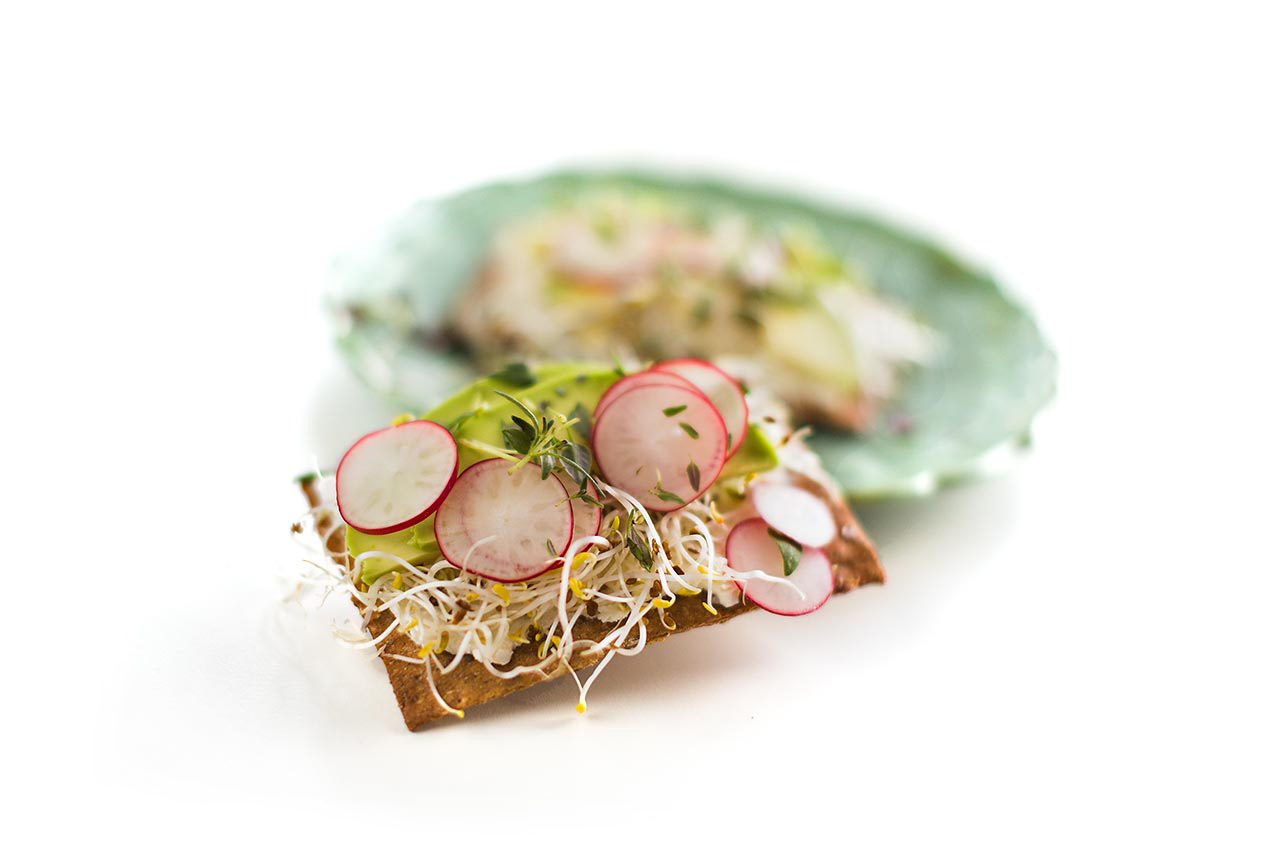Snacks, fruit and vegetables and gestational diabetes
Mellanmål, frukt och grönsaker vid graviditetsdiabetes - engelskaThe content concerns Jönköpings länEating regularly helps you to keep your blood sugar level stable and to avoid cravings for sweet treats. The point of a snack is not to feel full but to avoid hunger pangs before your next meal. Three main meals and one or two snacks is a good eating plan if you have gestational diabetes.

Suggestions for snacks - Förslag på mellanmål
Suggestions for snacks with a smaller amount of carbohydrates
- 1–2 handfuls of nuts and seeds.
- A piece of fruit (if you choose a banana, it is best if you only eat half of it).
- 100–200 ml quark (kvarg), cottage cheese (Keso), plain yoghurt or fermented milk (filmjölk) with one of the following:
– berries and nuts or seeds
– berries and 100 ml Keyhole-labelled muesli
– a piece of fruit and 50 ml Keyhole-labelled muesli.
- Chia pudding:
2 tablespoons Chia seeds, 100 ml milk/plant-based alternative and flavouring of your choice, such as cinnamon, vanilla essence and berries. - Overnight oats:
100 ml porridge oats, 100 ml milk/plant-based alternative with berries and nuts. - A slice of wholegrain bread with two toppings.
- 1–3 pieces of crispbread with two toppings.
- 1–3 plain puffed rice, sweetcorn, spelt, lentil or chickpea cakes with topping, such as:
– low-fat cheese and turkey
– liver pâté and egg
– hummus, pea or bean spread
– sprat salad (gubbröra), shrimp salad (skagenröra) or ham salad (skinkröra)
– peanut butter, cottage cheese and a slice of pear. - Egg, omelette or scrambled eggs.
- Mackerels in tomato sauce.
- Egg and herring (sill).
- Avocado.
- Olives.
- Vegetable sticks with dip.
- Edamame beans with salt or soya sauce.
Fruits and vegetables - Frukt och grönsaker
Fruits and vegetables are healthy eating choices because they are high in fibre, vitamins and minerals. However, fruits, unlike vegetables, are high in sugar. A good rule of thumb is to eat just one piece of fruit each time. With some fruits (such as bananas), you should limit the amount you eat and eat only half a piece each time. With other fruits, you can eat several pieces each time (such as two or three clementines or kiwis).
When it comes to fruits and vegetables, 15–20 grams of carbohydrates per portion can be a good rule of thumb.
Here you can compare how many grams of carbohydrates various fruits and vegetables contain, either each or per portion:
Fruits
|
Type |
Weight/amount |
Carbohydrates |
|
Pineapple |
45 grams/slice |
5 grams |
|
Orange |
125 grams each |
15 grams |
|
Apricots, fresh |
125–150 grams each |
10 grams |
|
Apricots, dried |
7 grams each |
3.5 grams |
|
Banana |
100–150 grams each |
20–30 grams |
|
Blueberries |
60 grams/100 ml |
5 grams |
|
Clementine |
75–125 grams each |
5–10 grams |
|
Dates |
8 grams each |
5 grams |
|
Raspberries |
50 grams/100 ml |
2 grams |
|
Strawberries |
50 grams/100 ml |
5 grams |
|
Kiwi |
50–100 grams each |
5–10 grams |
|
Mango |
250 grams each |
35 grams |
|
Melon |
150 grams/slice |
10 grams |
|
Raisins |
60 grams/100 ml |
40 grams |
|
Sharon/kaki (persimmon) |
85–100 grams each |
15 grams |
|
Grapes |
10–15 grapes |
15 grams |
|
Apple/pear |
125–200 grams each |
15–20 grams |
Vegetables
|
Type |
Weight/amount |
Carbohydrates |
|
Aubergine |
70 grams/portion |
2 grams |
|
Avocado |
100 grams each |
2 grams |
|
Cauliflower |
25 grams/floret |
1 grams |
|
Broccoli |
25 grams/floret |
1 grams |
|
Cucumber |
50 grams/100 ml |
1 grams |
|
Sweet corn |
70 grams/100 ml |
10 grams |
|
Carrot |
65 grams each (medium sized) |
5 grams |
|
Parsnip |
65 grams each (medium sized) |
5–10 grams |
|
Potato |
60 grams each (egg sized) |
10 grams |
|
Pumpkin |
70 grams/portion |
3 grams |
|
Beetroot, fresh |
50–100 grams each |
5–10 grams |
|
Beetroot, pickled slices |
10 grams/slice |
1.5 grams |
|
Red onion |
100–200 grams each |
5–10 grams |
|
Lettuce |
25 grams/100 ml |
0 grams |
|
Tomato |
80–100 grams each |
2 grams |
|
Cabbage |
35 grams/100 ml |
2 grams |
|
Peas |
60 grams/100 ml |
5 grams |
Keep track of your blood sugar level - Håll koll på ditt blodsockervärde
Comparing the carbohydrate content of different foods and dishes can help you to more easily keep you blood sugar level under 8 mmol/l after each meal.
Your diet should include at least 175 grams of carbohydrates each day. A good rule of thumb is 3 main meals with 30–45 grams of carbohydrates per meal and 2–4 snacks with 15–30 grams of carbohydrates.
It can be a good idea to download the T1D app and use “Enkla-listan” (simple list).
Find out more (in Swedish only): Appen T1D - din guide till typ 1 diabetes (The T1D app – your guide to type 1 diabetes)